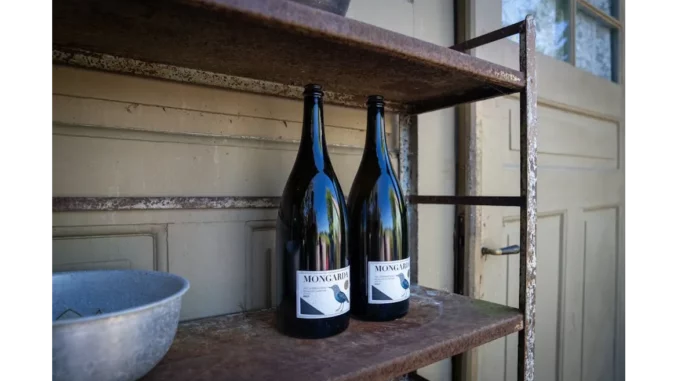
Mastering the Art of Wine Collecting: A Guide to Building a Profitable Collection
The allure of owning a Burgundy Grand Cru Pinot Noir or a Bordeaux First Growth like Chateau Lafite Rothschild extends beyond mere consumption. For many, these exquisite bottles represent a lucrative investment opportunity. However, transforming your passion for wine into a profitable venture requires careful strategy and expert guidance.
In this article, we present essential tips to help you navigate the intricate world of wine collecting and introduce you to Vinovest, a leading platform for wine investment in 2023.
Understanding the Difference: Buying vs. Collecting Wine
Purchasing a bottle of wine to enjoy over dinner is vastly different from acquiring it as part of an investment portfolio. Collectors seek bottles that will appreciate in value, often with the dual intent of eventual resale and occasional personal indulgence.
Key Factors in Choosing Investment Wines
To curate a profitable collection, collectors must carefully evaluate several critical factors:
1. Prices
– Analyse current retail prices, historical price trends, and auction histories. For instance, Grand Cru wines command high prices due to the cost of production and their perceived value, influenced by factors such as region, scarcity, and provenance.
2. Cellaring Period and Lifespan
– Knowledge of a wine’s optimal cellaring period is crucial. While Sauvignon Blanc is best consumed within a few years, Cabernet Sauvignon can be cellared for decades.
3. Provenance and Pedigree
– Understanding a wine’s provenance and pedigree, including its storage and shipping conditions, is essential for maintaining value.
4. Additional Considerations
– Vintage reports, tasting notes, and detailed winery information also play a significant role in the decision-making process.
10 Essential Tips for Building a Wine Collection
To help you start your wine collection on the right foot, here are ten indispensable tips:
1. Assess Your Disposable Income and Budget
– Factor in costs beyond the wine itself, such as storage, insurance, and expert consultation fees.
2. Find a Trusted Source
– Whether through auction houses, trusted wine cellars, or online merchants, ensure authenticity through expert vetting.
3. Check the Packaging
– Packaging impacts longevity; for example, bottles with longer natural corks maintain airtight conditions better than those with synthetic corks.
4. Insure Your Wines
– Protect your collection with an insurance policy covering breakage, natural disasters, and theft.
5. Keep Track of Your Wine Collection
– Maintain meticulous records of each bottle, including storage locations, tasting dates, and detailed notes.
6. Maintain a Balanced Mix
– Aim for a diverse collection with a mix of prices, vintages, and types, including both young and mature wines.
7. Beware of Counterfeits
– Use professional help to identify counterfeit wines through labels, corks, and sediment analysis.
8. Document Everything
– Keep original purchase receipts, auction catalogues, and seller details. Photographs and notes on vintage years are also essential.
9. Regularly Appraise Your Collection
– Periodically reassess your collection and obtain professional appraisals to keep your cellar log current.
10. Know How to Resell
– Familiarise yourself with resale options, such as online auctions and wine exchanges, to ensure a smooth selling process.
Essential Investments for a Wine Collection
Proper handling and storage are paramount to preserving and enhancing the value of your wine collection. Here’s what you need:
A. Proper Storage
– Invest in a quality wine cellar or compressor-based wine fridge to maintain optimal conditions. Alternatively, professional cellar facilities can offer an easier solution.
B. Serving Instruments
– When the occasion calls for tasting, use the appropriate glassware and decanters. A double-hinged corkscrew and a good stopper for sparkling wines are also indispensable tools.
Resources for Aspiring Collectors
Utilise cellar tracking systems, wine investment apps, and market data from platforms like Liv-Ex. Attend auctions, tastings, and forums such as the Napa Valley Forum to network with industry professionals. Engage with sommeliers, winery owners, and leverage wine-related literature and podcasts to refine your strategies.
Simplifying Wine Investment with Vinovest
Vinovest streamlines the complexities of wine investment, offering an intelligent platform that handles the selection, authentication, storage, and sale of investment-grade wines. Here’s how it works:
1. Easy Buying and Selling
– Vinovest’s online platform allows for seamless transactions and delivery for personal enjoyment.
2. Portfolio Tracking
– Monitor and manage your collection effortlessly through an intuitive interface.
3. Optimal Storage Conditions
– Your wines are stored in bonded cellars under perfect conditions, ensuring quality preservation.
4. Verified Provenance and Authenticity
– Each bottle’s provenance is meticulously traced and authenticated.
5. Competitive Pricing
– Vinovest secures wines at wholesale prices directly from winemakers and merchants.
6. Expert Advisory Team
– Benefit from a team of sommeliers and AI-driven investment models to curate your portfolio.
7. Extensive Network
– Gain access to exclusive releases and private sales through Vinovest’s deep industry connections.
8. Cost Efficiency
– A 2.5% annual fee (1.9% for portfolios above $50,000) covers all services, including storage and insurance, with tax advantages due to bonded warehouse storage.
9. Ownership
– Unlike other investments, you retain full ownership of your wines.
Embarking on the journey of wine collecting can seem daunting, but with the right guidance and tools, it becomes an enjoyable and profitable endeavour. Vinovest offers a streamlined approach to building and managing a fine wine collection, making it accessible for enthusiasts and investors alike. Why wait? Start your wine investment journey today and watch your collection flourish.


Be the first to comment